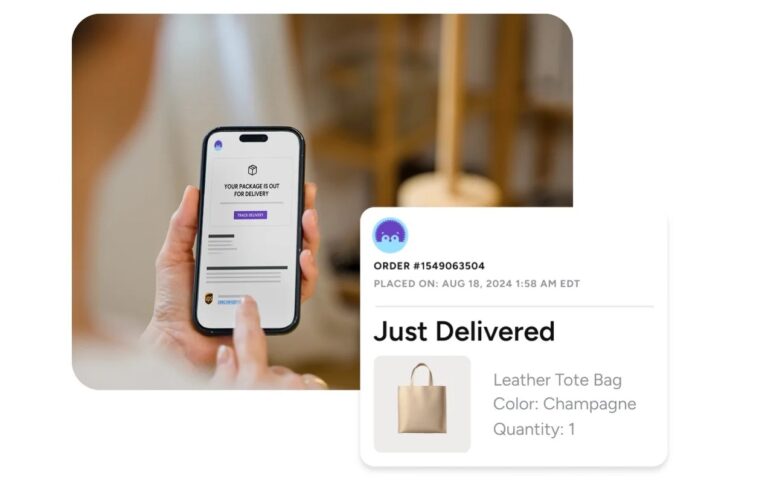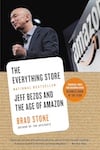Search and discovery innovations are fueling a digital transformation in B2B e-commerce. For manufacturers, distributors, and wholesalers, these tools are essential to delivering the seamless, personalized buying experiences modern customers expect.
The 2025 Paradigm B2B Combine for Search and Discovery Solutions report, authored by e-commerce expert and Paradigm B2B CEO Andy Hoar, provides an in-depth analysis of how top platforms are evolving. It evaluates seven leading vendors — Algolia, Constructor, Coveo, GroupBy, HawkSearch, Klevu, and Zoovu — across 12 critical categories, including customer support, keyword search, personalization, merchandising, and results management.
A key finding is that no single vendor dominates across all categories. Each platform offers distinct strengths, underscoring the importance of a tailored, “fit-to-need” evaluation for buyers.
Another notable insight: product search is becoming deeply personal. Leading solutions now go beyond keyword matching to deliver AI-powered, intent-driven results — an increasingly vital capability in today’s B2B landscape.
B2C-Level Simplicity in B2B Search
Table of Contents
- 1 B2C-Level Simplicity in B2B Search
- 2 Fixing B2B Search With Better Data
- 2.1 E-Commerce Times: What are the most significant barriers to delivering a consumer-like search experience in B2B e-commerce?
- 2.2 How essential is this cataloging methodology to successful business engagements?
- 2.3 Can you share an example of a company that successfully improved its search and product discovery and how it impacted its business?
- 2.4 Can you share a real-world example of the return on investment (ROI) from improved product search?
- 2.5 What key performance indicators (KPIs) should B2B retailers track to ensure their digital investments in search optimization are paying off?
- 2.6 What does the “consumerization” of B2B e-commerce mean?
- 2.7 How is it reshaping the industry?
- 2.8 How are the expectations of B2B buyers evolving, and what lessons can they learn from B2C e-commerce trends?
- 2.9 What are the biggest mistakes companies make when implementing search solutions, and how can they be avoided?
According to GroupBy Director of Product Arv Natarajan, B2B buyers now expect search experiences that mirror those of consumer-grade interactions.
“Compared to legacy keyword-matching search solutions, GroupBy leverages vast product and customer data to deliver highly relevant, real-time results,” Natarajan told the E-Commerce Times.
GroupBy’s AI-powered search and product discovery engine is built on Google Cloud Vertex AI Search, enabling B2B sellers to offer intuitive, personalized shopping experiences. Natarajan explains that for industries with massive, complex catalogs, this kind of AI-first approach is a revelation.
Fixing B2B Search With Better Data
When asked about the most significant barrier to delivering great B2B search, Natarajan points to one thing: bad data.
We asked him to delve deeper into issues surrounding the consumerization of B2B e-commerce, including maximizing ROI with B2B search and product discovery, identifying the best tools for overcoming B2B e-commerce’s search challenges, and what to look for in B2B search and product discovery solutions.
E-Commerce Times: What are the most significant barriers to delivering a consumer-like search experience in B2B e-commerce?
Arv Natarajan: The most significant barrier is the quality of the data in their product catalog. Unlike business-to-consumer product catalogs, B2B product catalogs encompass a vast array of niche products. These require particular search criteria, such as part numbers, product measurements, or year, make, and model fields.
Compounding this problem is often a lack of standardized data in these expansive catalogs. Various suppliers provide product data using different units of measurement, color descriptors, levels of detail, and other specifications.
How essential is this cataloging methodology to successful business engagements?
Natarajan: Without standardization across these features, even the best search engine in the world will struggle to return results that maximize revenue.

Director of Product
Natarajan: RS Group, a global distributor of industrial and electrical products, has an extensive inventory of over 750,000 industrial and electronic products sourced from more than 2,500 suppliers.
Before engaging GroupBy, a Rezolve Ai company, they constantly managed and updated more than 30,000 search rules to optimize their product catalog and search experience. Since implementing the Rezolve Ai platform, the RS Group has reduced its search rules to zero, increased search conversion rates by more than 3.2%, and reduced null searches by 47%.
Additionally, the company’s merchandising team experienced a 60% increase in productivity due to the time saved by not optimizing its search rules.
Natarajan: Again, bad data is the usual culprit. Although many retailers have access to vast amounts of data, many face issues related to inaccurate, damaged, or missing data. As a result, the AI cannot be fully optimized because it is working from a flawed foundation.
This is where Catalog-as-a-Service (CaaS) solutions come into play. GroupBy’s data enrichment platform, for example, leverages AI to help retailers optimize their product data without the significant time and labor investment required to complete it manually.
Additionally, B2B companies often face challenges such as a lack of personalization on their websites, catering to multiple stakeholders and personas, and replicating the ease of B2C buying experiences.
What key performance indicators (KPIs) should B2B retailers track to ensure their digital investments in search optimization are paying off?
Natarajan: Revenue is the most critical KPI that B2B retailers should track. E-commerce is now the primary driver of top-line revenue growth, accounting for 34% of all revenue generated by B2B operators offering it.
All retailers are pursuing one key goal: to drive revenue. However, KPIs such as null search results, cart conversions, and add-to-cart actions are also essential to measure strategically. You are missing a key component if your revenue is not increasing.
What does the “consumerization” of B2B e-commerce mean?
Natarajan: That term speaks to changing customer expectations. Over the past few years, technology has created B2C shopping experiences that are convenient and hyper-personalized.
For example, thanks to Amazon, consumers expect fast shipping. Flexible purchasing options are another example, as consumers have grown accustomed to choosing between home delivery, curbside pickup, or in-store pickup when making an online purchase.
How is it reshaping the industry?
Natarajan: These expectations for easy, personalized shopping experiences are now translating into how B2B customers shop. They now expect easy-to-navigate, hyper-personalized B2B e-commerce sites supported by the sales relationships for which the industry is known.
How are the expectations of B2B buyers evolving, and what lessons can they learn from B2C e-commerce trends?
Natarajan: I think it’s likely that, at least shortly, we’ll continue to see a hybrid approach. Although many B2B shoppers are coming to rely on e-commerce experiences for convenient, day-to-day purchases, there is still a time and place for one-on-one conversations with their sales reps.
What’s unlikely to stick around is the traditional sales model. B2B operators need to incorporate e-commerce into their strategy if they haven’t yet done so.
An effective e-commerce search and product discovery experience can help prevent customers from needing to call sales reps to find what they’re looking for. As a result, sales teams can focus on high-value sales activities, such as acquiring new customers, rather than troubleshooting and responding to basic client queries.
What are the biggest mistakes companies make when implementing search solutions, and how can they be avoided?
Natarajan: When implementing a new search solution, companies often fail to establish data governance guidelines and fix their broken data. To make the most of any new search solution, it is essential to start with a solid data foundation.
Cleaning up bad data through human-driven efforts can be a time-consuming process. A Catalog-as-a-Service solution like our company’s Enrich uses AI to help B2B operators improve their existing data and maintain data governance standards on an ongoing basis.
However, for an AI-powered data enrichment solution to be effective, it must be trained to refine its attribution, standardization, and enrichment processes over time. Achieving this level of refinement calls for a human-in-the-loop strategy. Combining AI with a merchandising team’s subject matter expertise ensures that the AI’s output is highly accurate.





